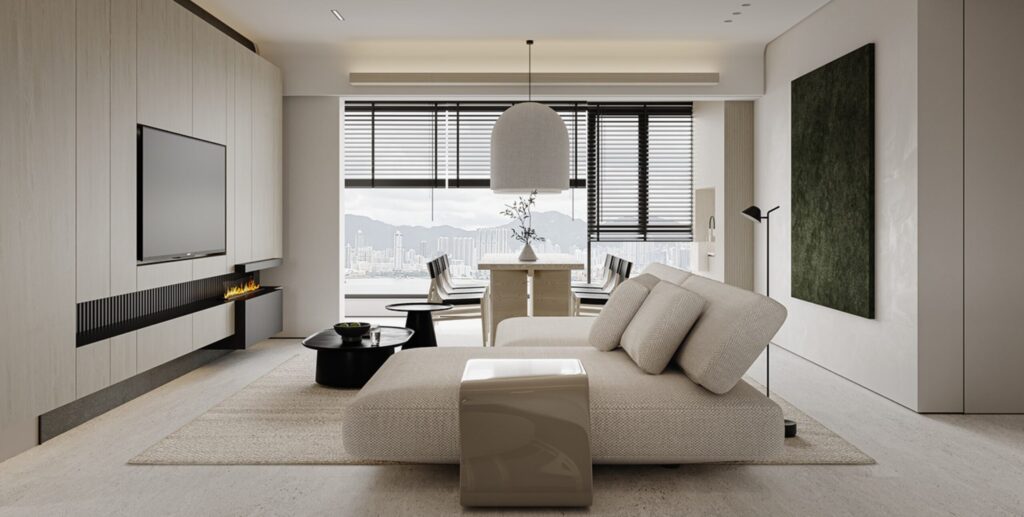
How to Create a Minimalist Home Without Sacrificing Style
Minimalism isn’t about living in an empty white box with one chair. It’s about creating a space that feels open, calm, and intentional while still reflecting your personality and taste. If you’ve ever thought, “I’d love a more minimalist home, but I don’t want to give up my sense of style,” you’re in the right place.
Step 1: Declutter Like You Mean It
Before you can create a minimalist home, you need to address what’s already there. Be honest with yourself—how much of your stuff do you actually use or love? Grab three bins: one for keeping, one for donating, and one for tossing.
Ask yourself questions like:
- Do I use this regularly?
- Does this bring me joy?
- Would I buy this again if I didn’t already own it?
Be ruthless. Those “maybe I’ll need this someday” items are usually the first to collect dust. And don’t forget to tackle areas like closets, kitchen drawers, and storage spaces that often get overlooked.
Step 2: Hire a Roll-Off Dumpster
Once you’ve sorted everything, you’ll likely have a surprising amount of items to discard. Instead of struggling with endless trash bags or trying to cram things into your weekly bin, consider hiring a roll-off dumpster. This is a game-changer for decluttering on a large scale. Consider this a must if you want something convenient that saves time and ensures that you’re disposing of items responsibly. Plus, there’s something incredibly satisfying about seeing all your unwanted clutter gone in one go.
Step 3: Stick to a Neutral Color Palette
Minimalist homes are often characterized by their clean, neutral color schemes. Think whites, beiges, greys, and soft earthy tones. Why? Because these colors create a sense of calm and make your space feel more open.
This doesn’t mean your home has to look boring. Add visual interest with texture—think woven rugs, linen curtains, or a cozy knit throw. You can also include subtle pops of color through accessories like artwork or decorative pillows.
Step 4: Invest in Multi-Functional Furniture
When space is limited, every piece of furniture should earn its place. Multi-functional furniture is a minimalist’s best friend. Look for items like:
- Storage ottomans – Perfect for hiding away blankets or books.
- Sofa beds – A chic solution for hosting guests.
- Extendable dining tables – Great for small spaces but can expand when needed.
- Foldable desks or tables – Easy to tuck away when not in use.
Choosing furniture that serves more than one purpose helps reduce clutter and keeps your space functional.
Step 5: Embrace Quality Over Quantity
Minimalism isn’t about buying nothing; it’s about buying intentionally. Focus on high-quality, timeless pieces that you truly love and that will last. Instead of filling your home with trendy, disposable decor, opt for items that feel meaningful and reflect your style.
For example, a handcrafted wooden dining table might cost more upfront, but it’ll be something you treasure for years to come. Similarly, a few well-chosen art pieces can do more for your space than dozens of small, mismatched decorations.
Step 6: Keep Surfaces Clear
Here’s a challenge: walk into any room in your home and look at the flat surfaces—tables, counters, shelves. How many are cluttered with random objects? Minimalist design thrives on clear surfaces.
This doesn’t mean everything needs to be hidden away, but be selective about what you display. A vase of fresh flowers or a single framed photo can have a much bigger impact than a cluttered assortment of knick-knacks.
Step 7: Bring in Natural Elements
Nature has a way of grounding us, and incorporating natural materials into your home can add warmth and balance to minimalist spaces. Think wooden furniture, stone countertops, jute rugs, or woven baskets. Plants are another fantastic way to add life and vibrancy without feeling overbearing.
Not sure where to start? Try low-maintenance plants like snake plants, pothos, or succulents. They’re forgiving even if you don’t have a green thumb!
Step 8: Focus on Lighting
Good lighting can make or break your minimalist home. Natural light is ideal, so keep your windows as unobstructed as possible—light, airy curtains or blinds are a great choice.
For artificial lighting, go for simple yet elegant fixtures. Think pendant lights, floor lamps with clean lines, or recessed lighting. And don’t forget dimmers! They let you adjust the mood and create a cozy atmosphere in the evenings.
Step 9: Edit Regularly
Minimalism isn’t a one-and-done process. It’s a lifestyle that requires occasional maintenance. Set aside time every few months to reassess your space. Are there items you’ve accumulated that no longer serve you? Is there an area that’s starting to feel cluttered again?
By staying on top of this, you’ll prevent clutter from sneaking back in and keep your home feeling fresh and intentional.
Step 10: Add Personality
Minimalism doesn’t mean stripping away your personality. It’s about making sure everything in your home has purpose and meaning. Display items that tell a story or make you happy—a framed photo from a memorable trip, a unique piece of pottery, or even a collection of books you genuinely love.
The key is to keep it balanced. A minimalist home should feel inviting and personal, not like a showroom.
The Beauty of Simplified Living
Creating a minimalist home isn’t about following strict rules or sacrificing style—it’s about making intentional choices that enhance your space and your life. When you let go of what no longer serves you and surround yourself with things you truly love, your home transforms into a place of peace and inspiration.
Minimalism isn’t just a design trend; it’s a way to live more intentionally, with less stress and more joy. Ready to start? Grab that bin, hire that dumpster, and start creating the space you’ve always dreamed of.